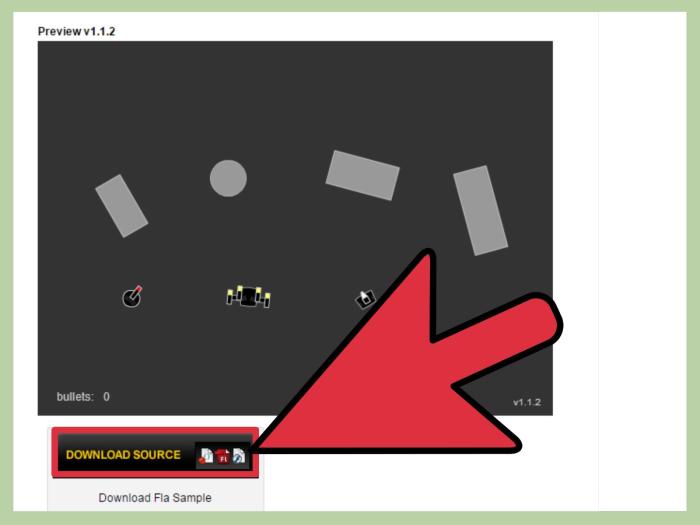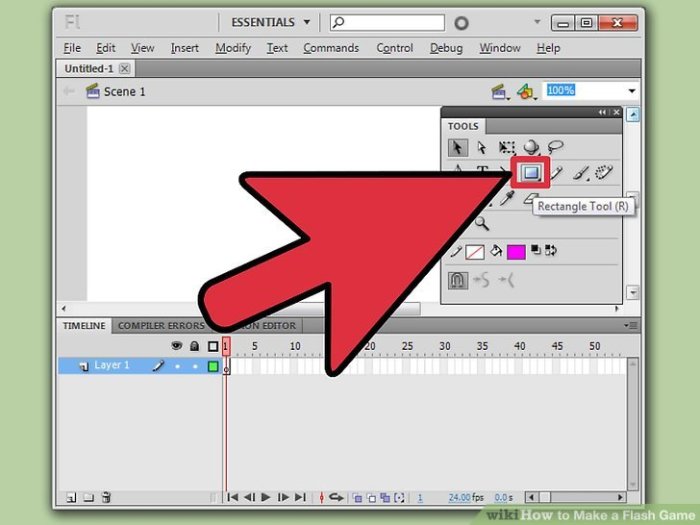Embark on an enthralling journey into the realm of game creation with our comprehensive guide on how to make flash games. Whether you’re a seasoned developer or a budding enthusiast, this tutorial will equip you with the essential knowledge and techniques to craft captivating and immersive flash games that captivate your audience.
Delve into the intricacies of game design, master the art of animation and graphics, and unravel the secrets of programming in Flash. Our step-by-step approach empowers you to create interactive elements, implement engaging gameplay mechanics, and navigate the world of publishing and distribution.
How to Make a Flash Game
Flash games were once a popular form of entertainment on the web. They are relatively easy to create, and can be very engaging and fun to play. If you’re interested in making your own flash game, here’s a step-by-step guide to help you get started.
Software Options

There are a number of different software options available for creating flash games. Here’s a table comparing some of the most popular options:
| Software | Platform | Features | Cost | Learning Curve |
|---|---|---|---|---|
| Adobe Flash Professional | Windows, Mac | Industry-standard software with a wide range of features | $20/month | Steep |
| HaxeFlixel | Windows, Mac, Linux | Open-source software with a focus on simplicity and ease of use | Free | Moderate |
| Stencyl | Windows, Mac, Linux | Drag-and-drop interface that makes it easy to create games without coding | $99 | Easy |
Game Design Principles: How To Make Flash Game

Before you start creating your flash game, it’s important to understand the core principles of game design. These principles will help you create a game that is fun, engaging, and challenging.
Some of the most important game design principles include:
- Gameplay: The gameplay is the core of your game. It’s what players will spend most of their time doing. Make sure that the gameplay is fun, engaging, and challenging.
- Story: The story is what drives the game forward. It gives players a reason to keep playing. Make sure that the story is interesting, engaging, and well-written.
- Characters: The characters are the people (or creatures) that players control in the game. Make sure that the characters are well-developed and relatable.
- Level design: The level design is the layout of the game world. Make sure that the level design is interesting, challenging, and visually appealing.
Animation and Graphics
The animation and graphics are what make your flash game come to life. Make sure that the animation is smooth and fluid, and that the graphics are high-quality and visually appealing.
Here are some tips for creating engaging animations and graphics for flash games:
- Use vector graphics: Vector graphics are scalable and can be used to create high-quality animations without sacrificing performance.
- Use tweening: Tweening is a technique that allows you to create smooth and fluid animations by interpolating between keyframes.
- Use particle effects: Particle effects can be used to add visual interest and excitement to your game.
Programming

The programming is what makes your flash game interactive. You’ll need to use a programming language to control the gameplay, the characters, and the level design.
The most common programming language used for flash games is ActionScript. ActionScript is a powerful and versatile language that can be used to create a wide variety of games.
Here are some tips for programming flash games:
- Start with the basics: Before you start coding, it’s important to understand the basics of programming. This includes learning about variables, data types, and control flow.
- Use object-oriented programming: Object-oriented programming is a powerful technique that can help you organize your code and make it more manageable.
- Test your code: It’s important to test your code regularly to make sure that it’s working correctly.
Interaction and Gameplay
The interaction and gameplay are what make your flash game fun to play. Make sure that the interaction is responsive and intuitive, and that the gameplay is challenging and rewarding.
Here are some tips for creating interactive and engaging flash games:
- Use a variety of input methods: Allow players to interact with your game using a variety of input methods, such as the keyboard, mouse, and touch screen.
- Make the gameplay challenging but fair: The gameplay should be challenging, but it should also be fair. Players should feel like they have a chance to win, even if they don’t always succeed.
- Reward players for their progress: Reward players for their progress by giving them points, power-ups, or other rewards.
Publishing and Distribution
Once you’ve finished creating your flash game, you’ll need to publish and distribute it so that people can play it.
There are a number of different ways to publish and distribute flash games. You can host your game on your own website, or you can submit it to a game portal like Newgrounds or Kongregate.
Here are some tips for publishing and distributing your flash game:
- Create a demo: Create a demo of your game that people can play before they decide whether or not to buy it.
- Promote your game: Promote your game on social media and other online channels.
- Get feedback: Get feedback from players and use it to improve your game.
Answers to Common Questions
What software is recommended for creating flash games?
Adobe Animate CC, HaxeFlixel, and FlashDevelop are popular software options for flash game development.
What are the key principles of game design?
Gameplay, story, characters, and level design are fundamental principles that contribute to a successful game.
How do I create engaging animations for my flash game?
Utilize vector graphics, tweening, and particle effects to bring your animations to life.
